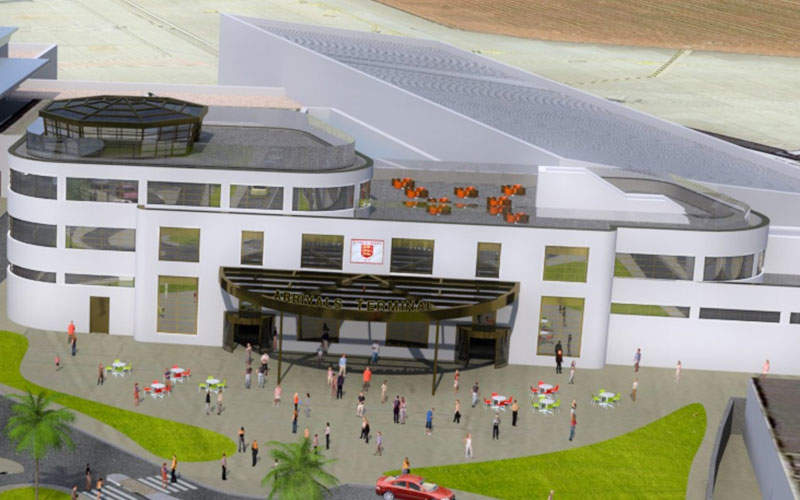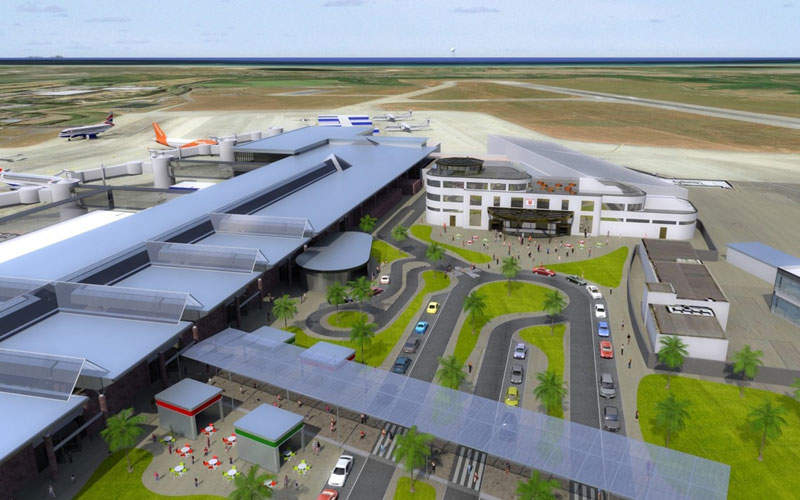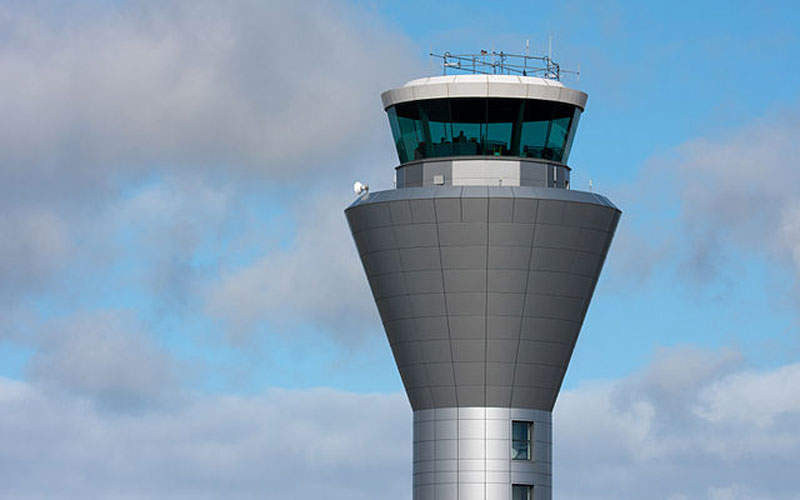Jersey International Airport, located in the parish of Saint Peter Jersey, is the only airport and gateway to Channel Islands. The airport handled more than 1.5 million passengers in 2015 and is anticipated to be served from 40 departure airports across the UK and mainland Europe in 2016.
Ports of Jersey, the company that jointly manages Jersey Airport and Jersey Harbours, has unveiled the master plan for the airport in July 2016. Though the entire plan is not yet available, major developments, which will be implemented in the next five to ten years, have been announced.
The development plan primarily focuses on improving the safety at the airport and making it operationally compliant by removing obstacles and constructing new facilities.
One of the important development projects outlined in the master plan is the removal of airport arrivals facility to construct a new one. Planning permission for the same was approved in February 2014, while the enabling works are due to start either in the end of 2016 or latest by early-2017.
Objectives of Jersey Airport master plan
Ports of Jersey spent approximately 18 months to compile the master plan for the airport to address the key issues prevailing at the airport.
The new plan focuses on addressing the key regulatory issues by removing the obstacles from the airfield and complying with the standard regulations for airport security and safety.
It also enables the airport to meet the anticipated business growth, accommodate increasing traffic flow and passengers, as well as welcome bigger aircraft. The plan also focuses on providing a better experience to the passengers by developing enhanced commercial opportunities.
Arrivals hall redevelopment at Jersey international airport
The arrivals hall at the airport was originally constructed in 1937 and in the subsequent years underwent many significant additions and alterations leaving no traces of the original structure.
In the later years, the arrivals building and the nearby Jersey hangar and fire service station were deemed to be obstacles for the safe operation of flights. Accordingly, the top two floors of the arrivals building had been demolished between 2011 and 2012, while its operations were relocated to a new facility.
To further remove the obstructions from the airfield, the permission to remove the arrivals hall completely was sought and approved in 2014.
The first stage of the redevelopment project will see the construction of a temporary arrivals facility, which will enable the removal of the existing building and construction of a new one. To be constructed near the departures terminal, the new building will have a larger overall floor space for commercial business operations, a restaurant, a viewing area that overlooks the taxiway and runway, and space for meeting rooms and offices.
The project also includes the realignment of the roadways and parking layout in the arrivals area. It will also see the creation of a 30m aviation security stand-off zone, which prevents the vehicles from coming close to the arrivals and departures terminal buildings.
Other developments outlined in the master plan
As part of the overall development programme, the passenger pier will be refurbished by expanding and creating larger open plan departure gates that will accommodate larger aircraft. Improvements at the pier will also create more space for retail and catering opportunities.
Another development to remove the obstacles on the airfield is the removal of rescue and firefighting building and the old Jersey hangar, which until recently housed the Airport Engineering. The existing fire building will be removed from the current location and a new facility will be constructed close to the new arrivals building.
Other projects to be implemented during the stage one include removal of Hangar-4 building and replacing it with a new maintenance building, redevelopment of immigration facilities, and the baggage reclaim offering expansion.
Funding for the development project
Ports of Jersey’s investment in the airport development is part of its long-term capital programme. The actual phasing will, however, be according to cash flows during the next five to ten years and is estimated to be up to £65m. The company plans to fund the project through its commercial returns instead of seeking government support.
Existing airport facilities and passenger amenities
The airport was officially opened in 1937 on a 97-acre land with a 980-yard grass runway. It initially featured two hangars and the terminal building, which itself included a central tower and two side buildings for arrivals and departures. The terminal also housed a restaurant and terraces on the second floor.
A new air traffic control building and tower commenced operations at the airport in 2010.
Passenger amenities available at the airport include baggage trolleys, cash facilities, executive lounges, a small chapel on the ground floor of the airside departures lounge, medical first aid, family facilities such as Aero Zone children’s play area, baby changing facilities, high chairs and child meals, lost property, left / missed luggage, post office, special assistance for passengers with reduced mobility, and Wi-Fi.
The airport also offers a range of retail outlets in the airside departures lounge. Some of the outlets include Healthspan, Jersey Pearl, Jersey Pottery, WHSmith, and World Duty Free.
A variety of cold and hot food options are also available across multiple outlets such as The Island Coffee Shop, The Aviator Cafe, Island Market and The Bar.
Runway and parking
The airport features a single runway (08/26), which is 5,597ft-long and surfaced with asphalt.
The airport has two public car parks. The long-stay car park is located opposite the departures terminal, and another is situated in front of the arrivals terminal. Both offer designated spaces for disabled drivers.
A free designated parking for motorbikes is located on the north side of the hire car slip road.
Ground handling services
Gama Aviation has acquired base at the airport since February 2016 and offers a variety of services from aircraft charter, FBO services, aircraft management and easily accessible conference facilities.
The airport hub offers a variety of facilities including a state-of-the-art VIP passenger lounge, crew facilities, direct-to-aircraft access, and a conference room.







